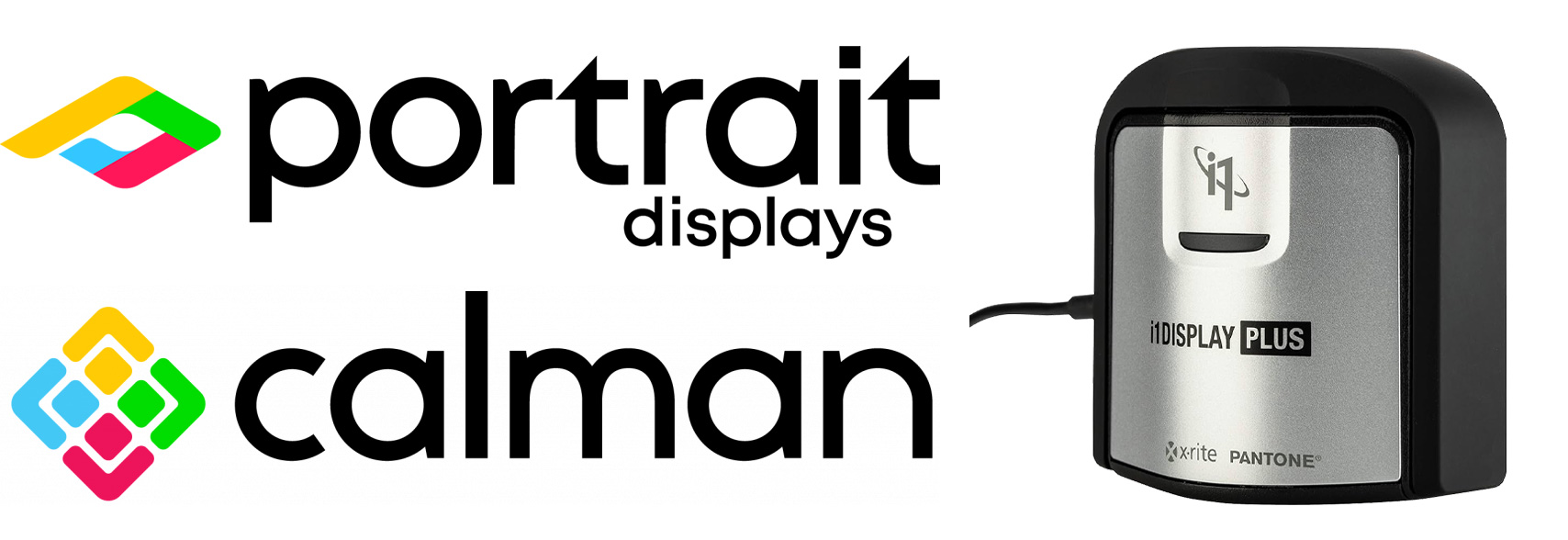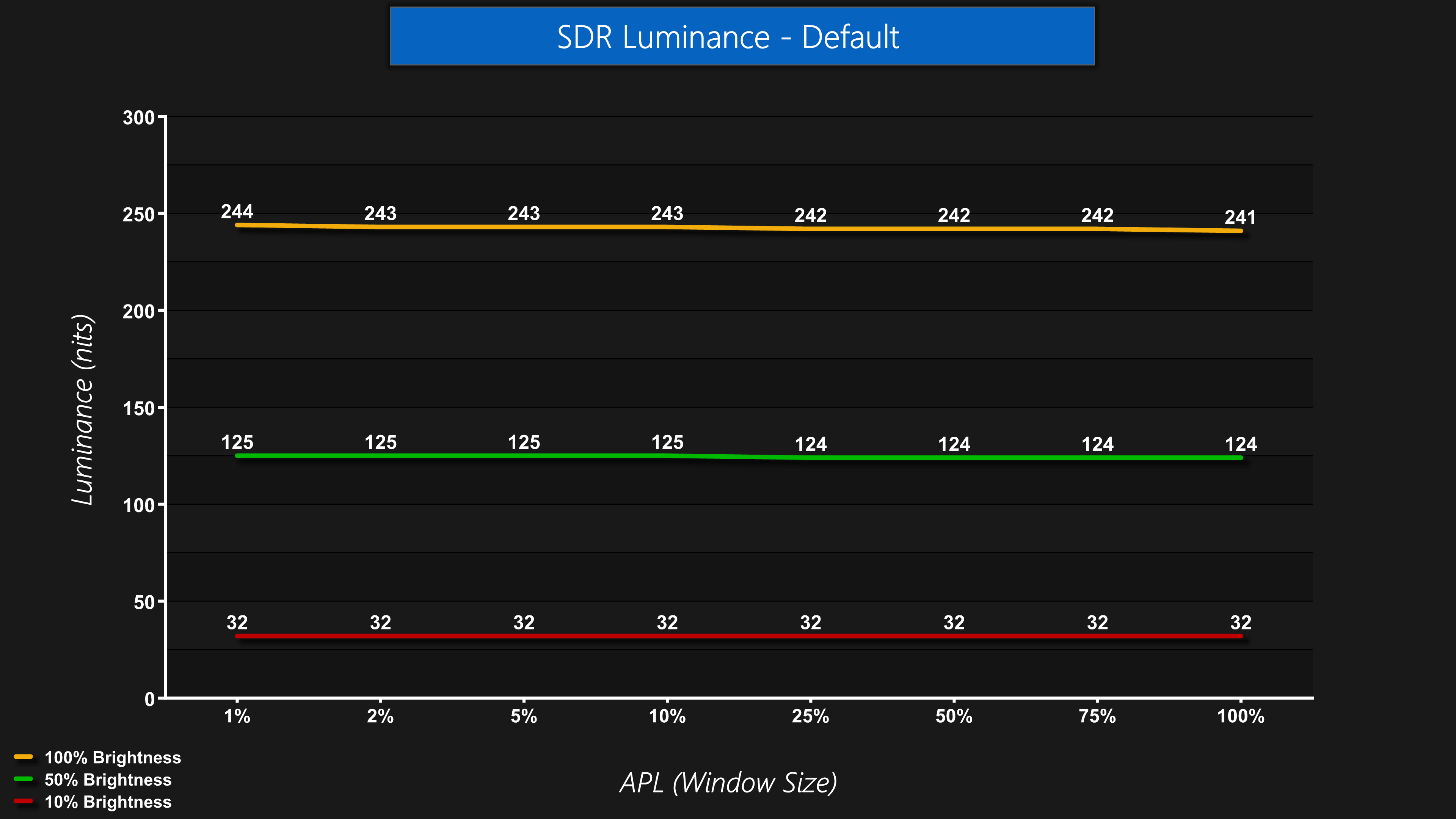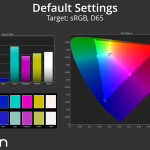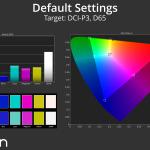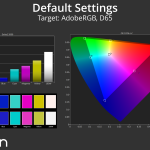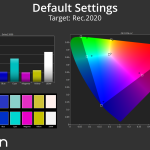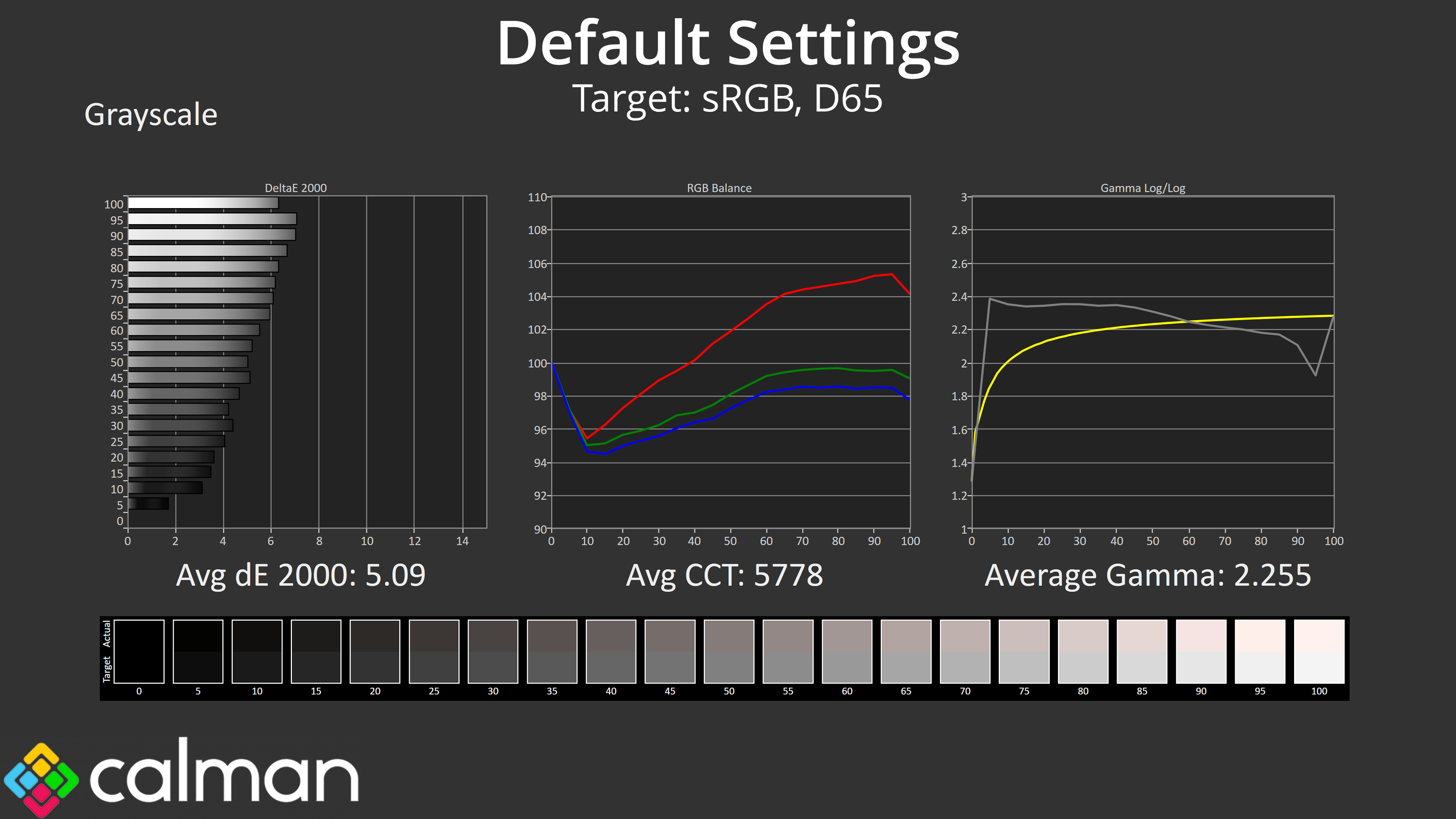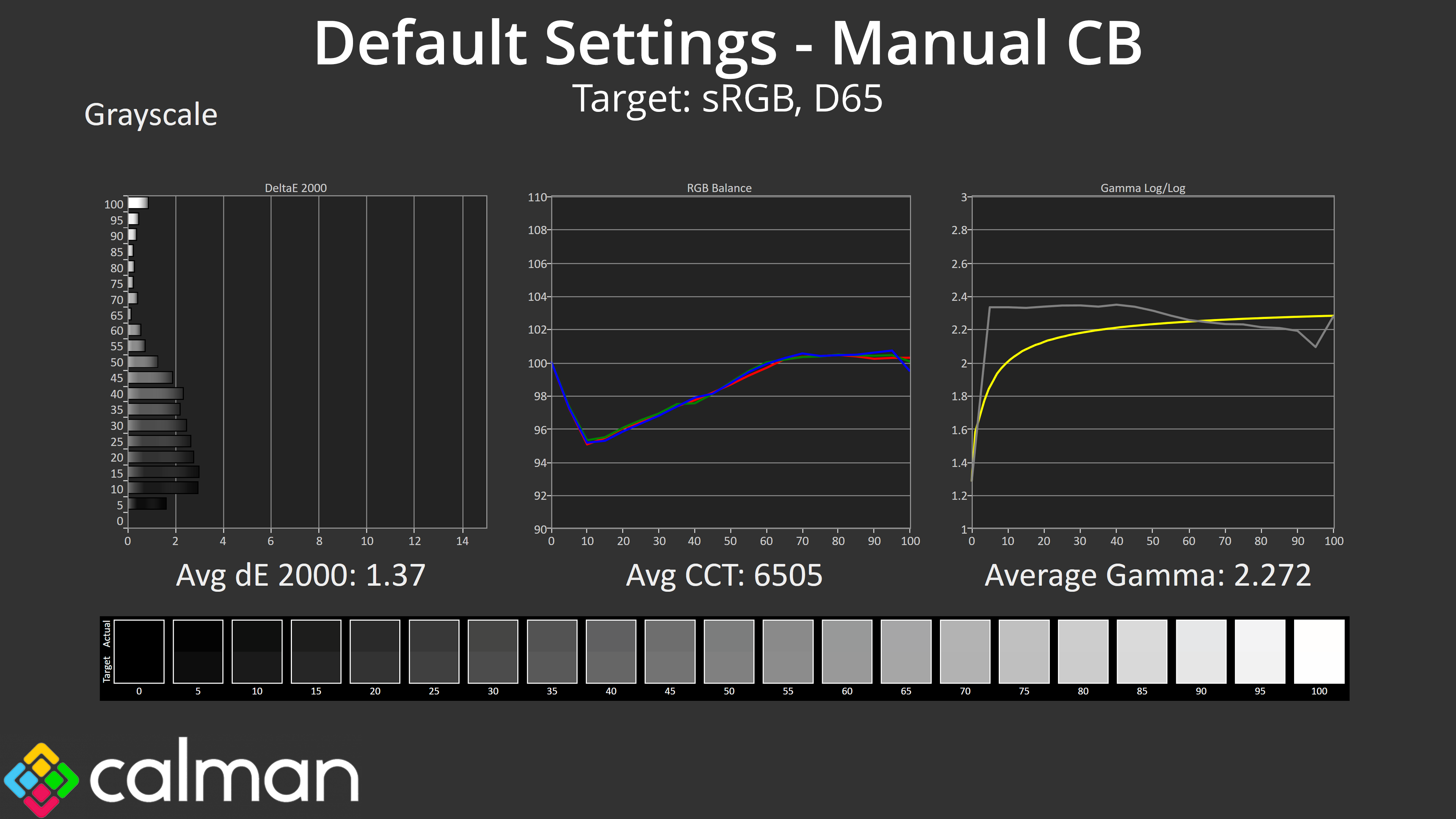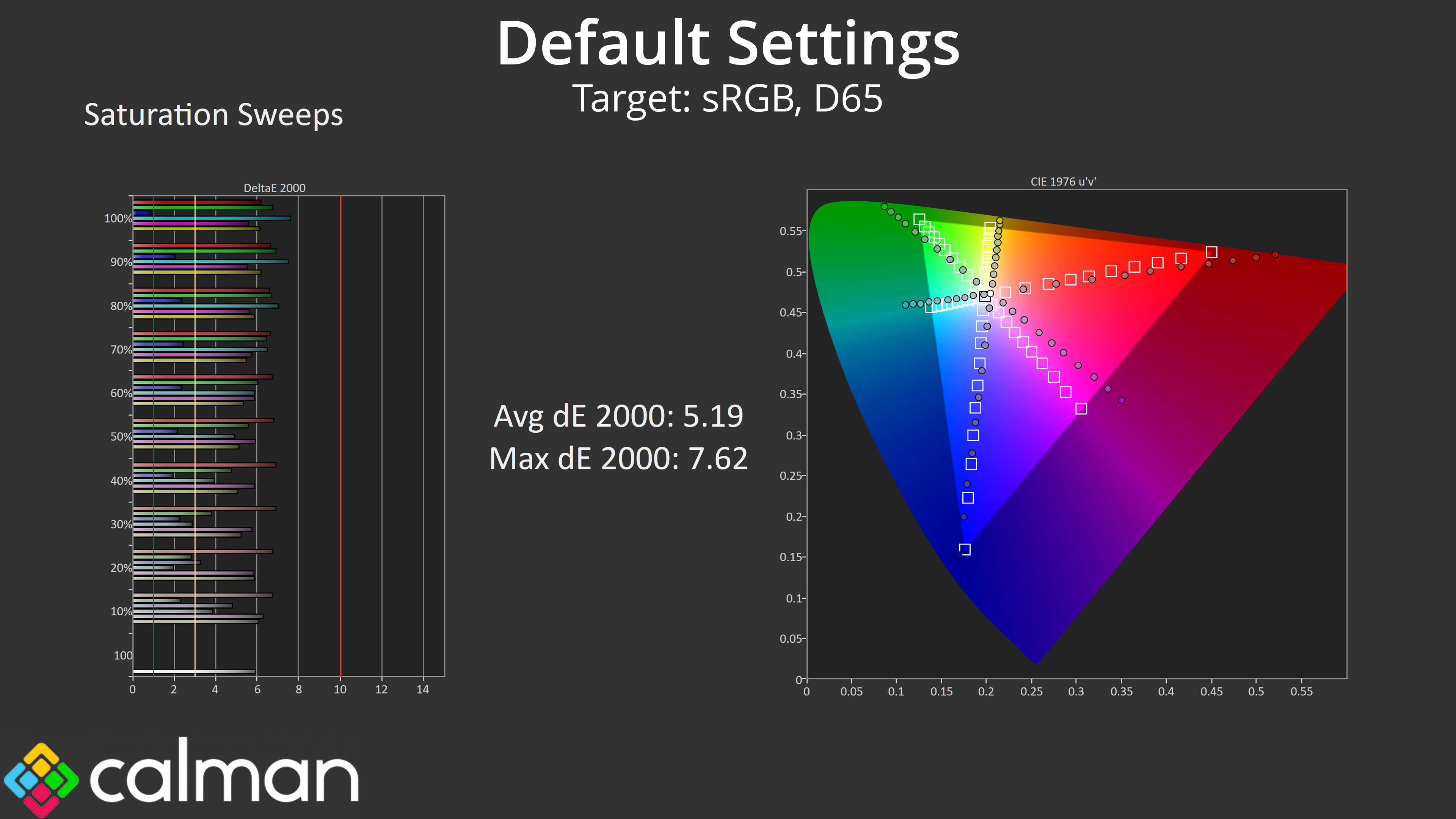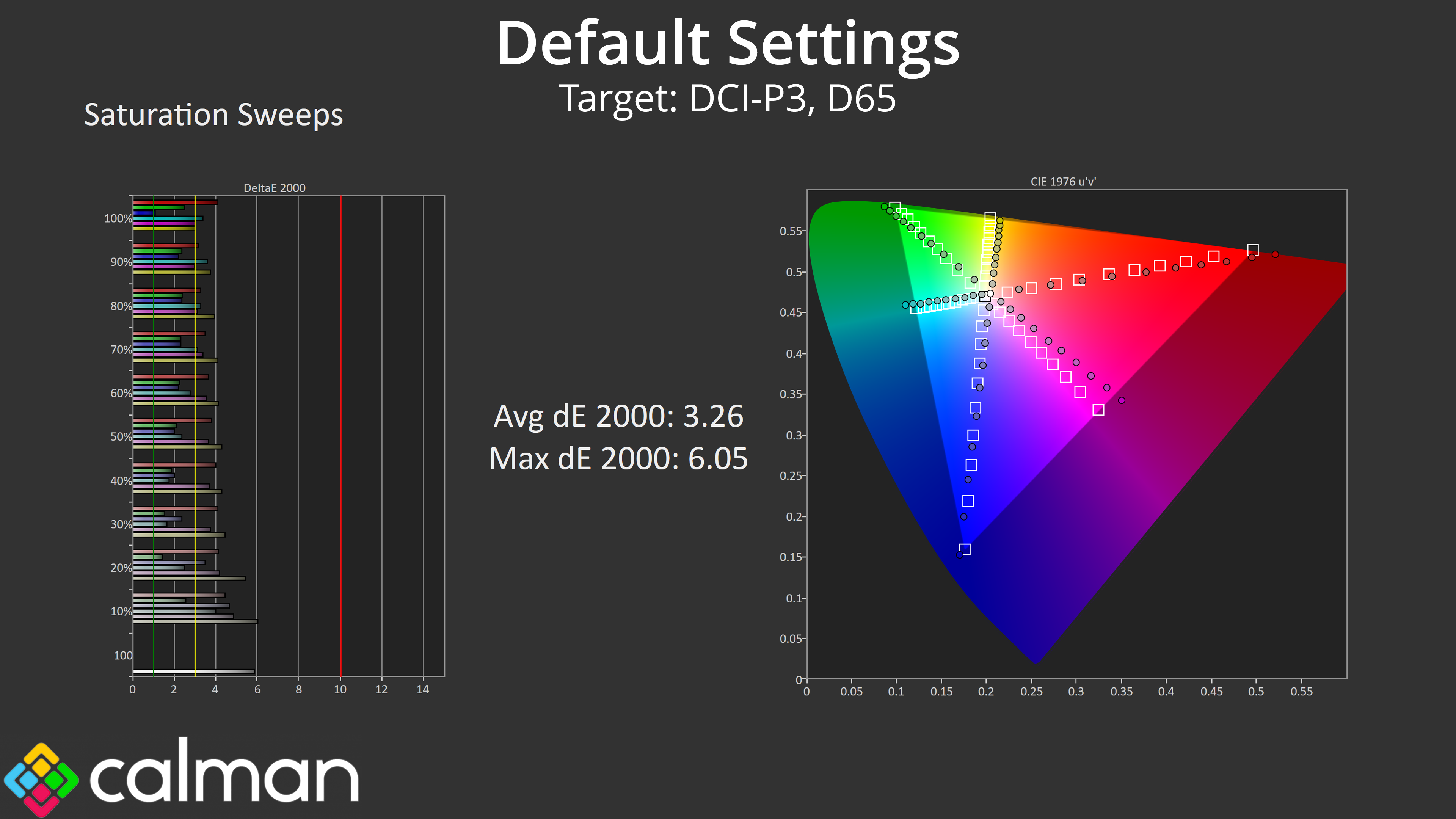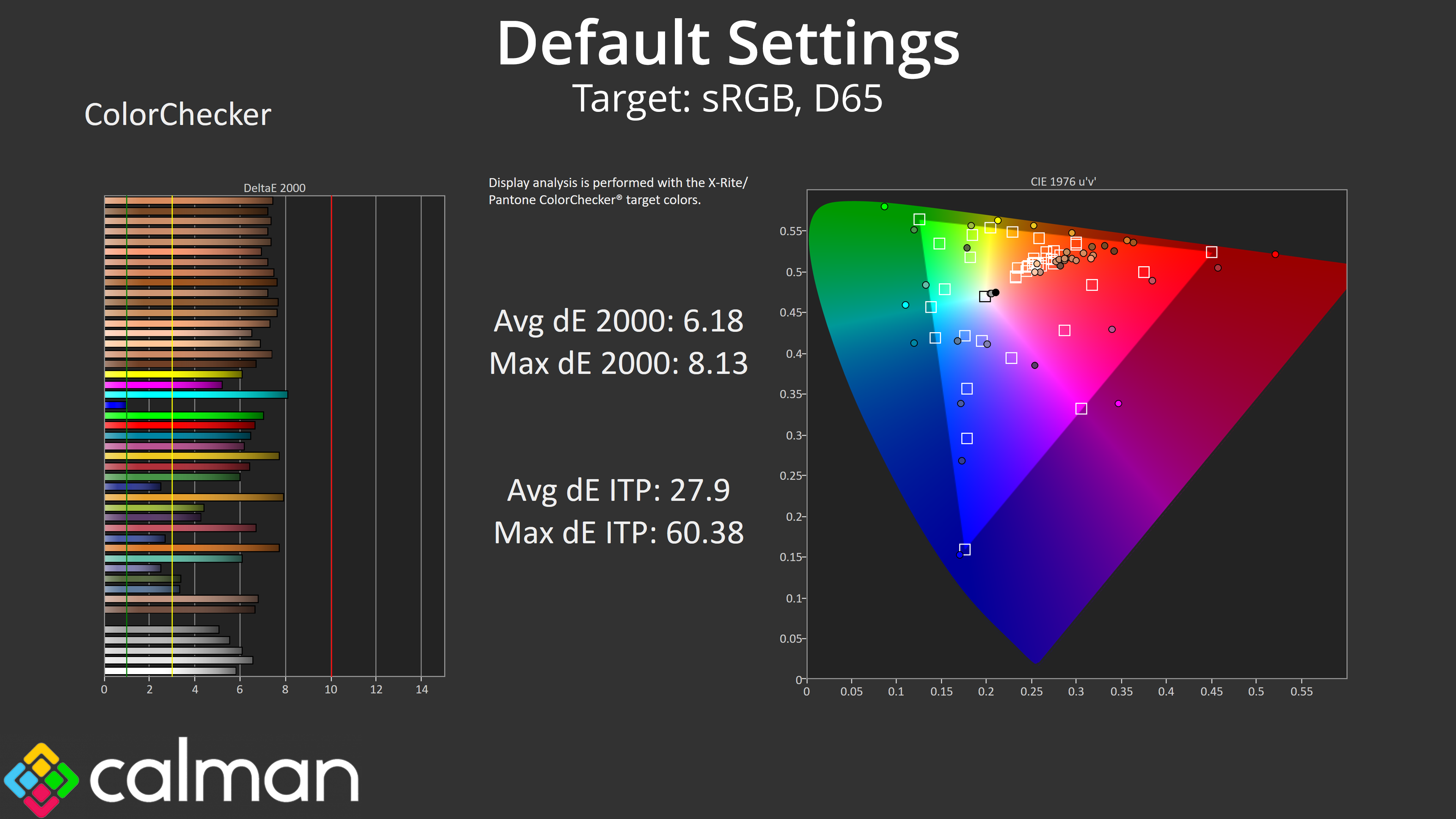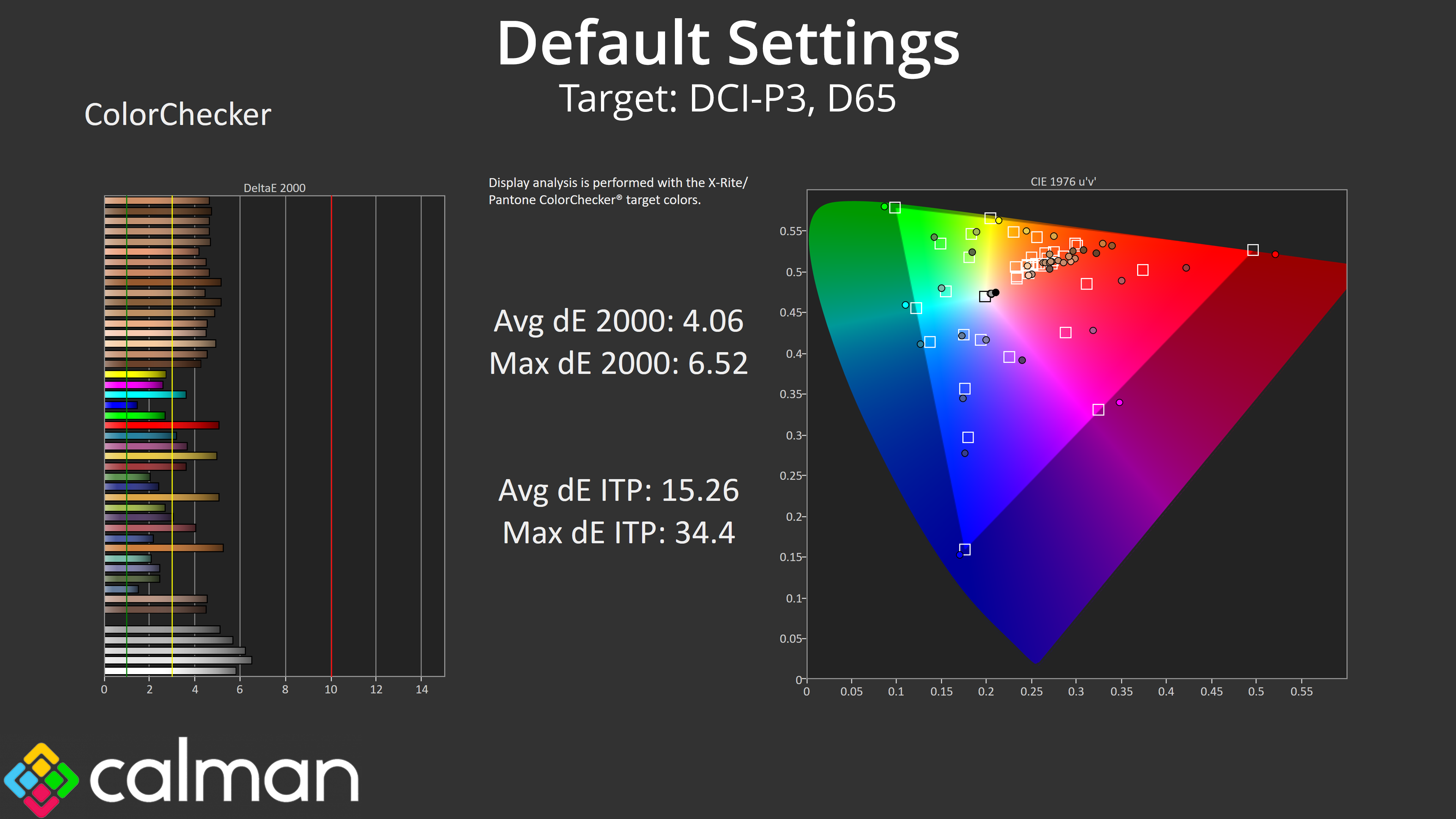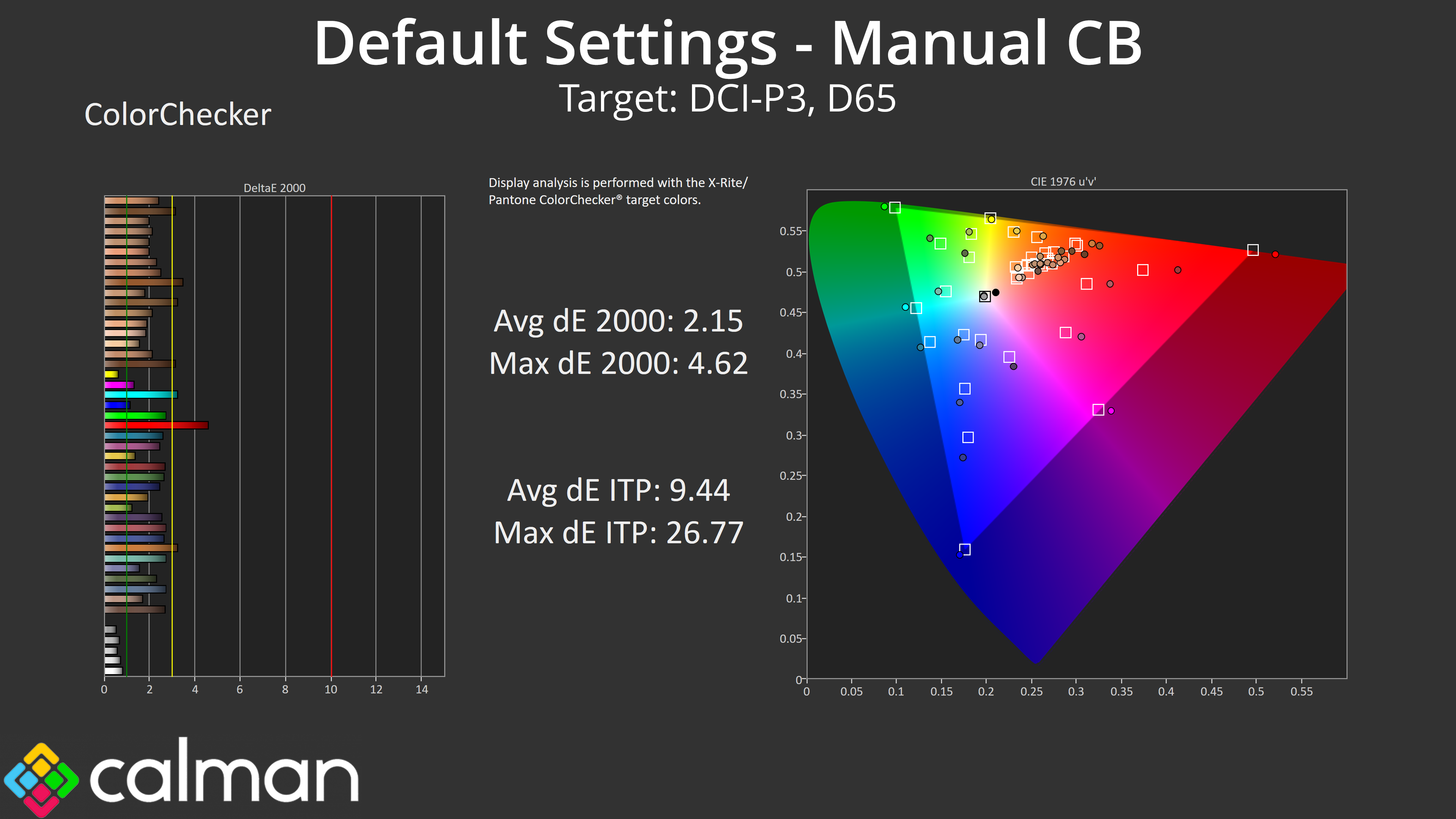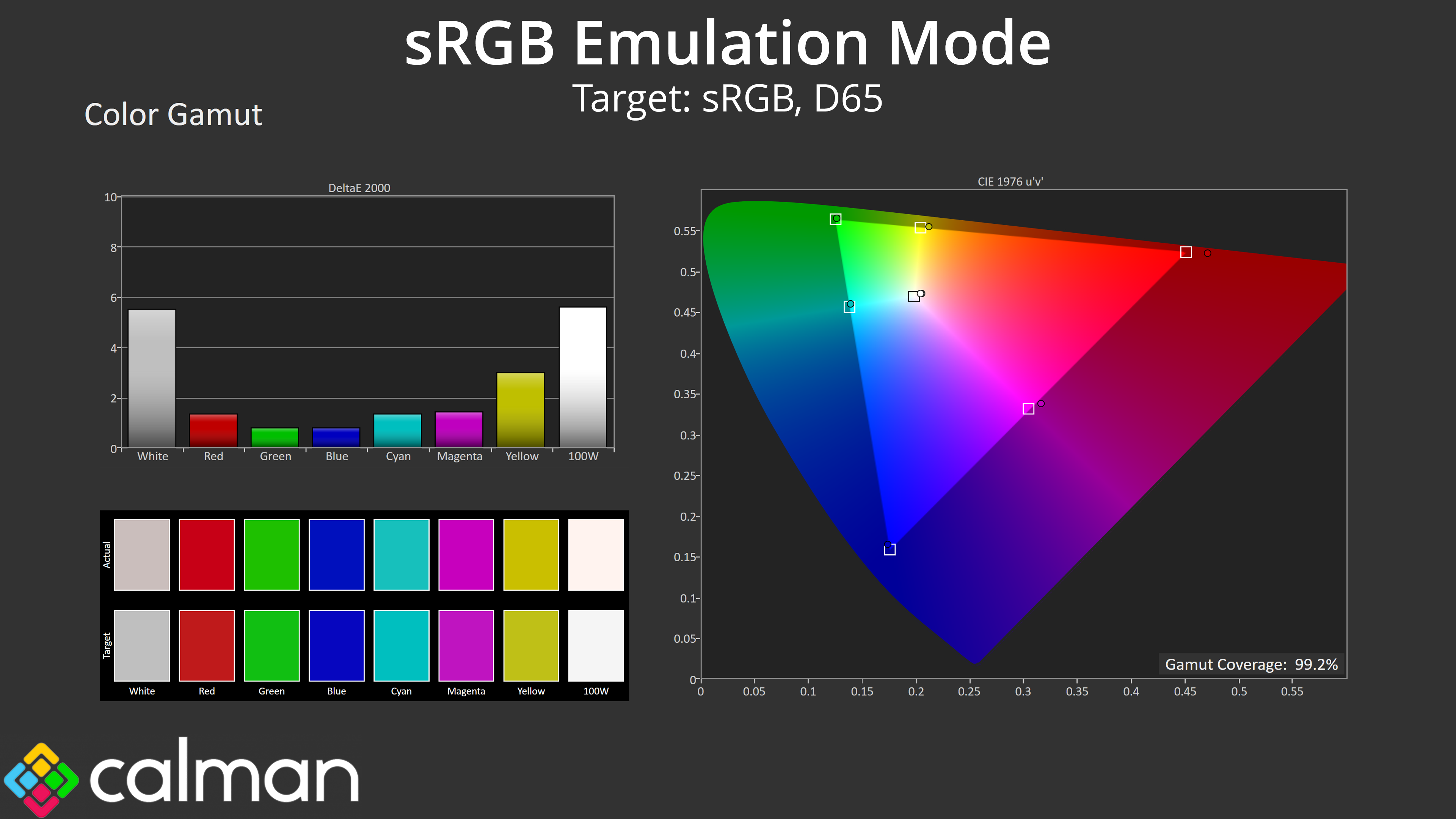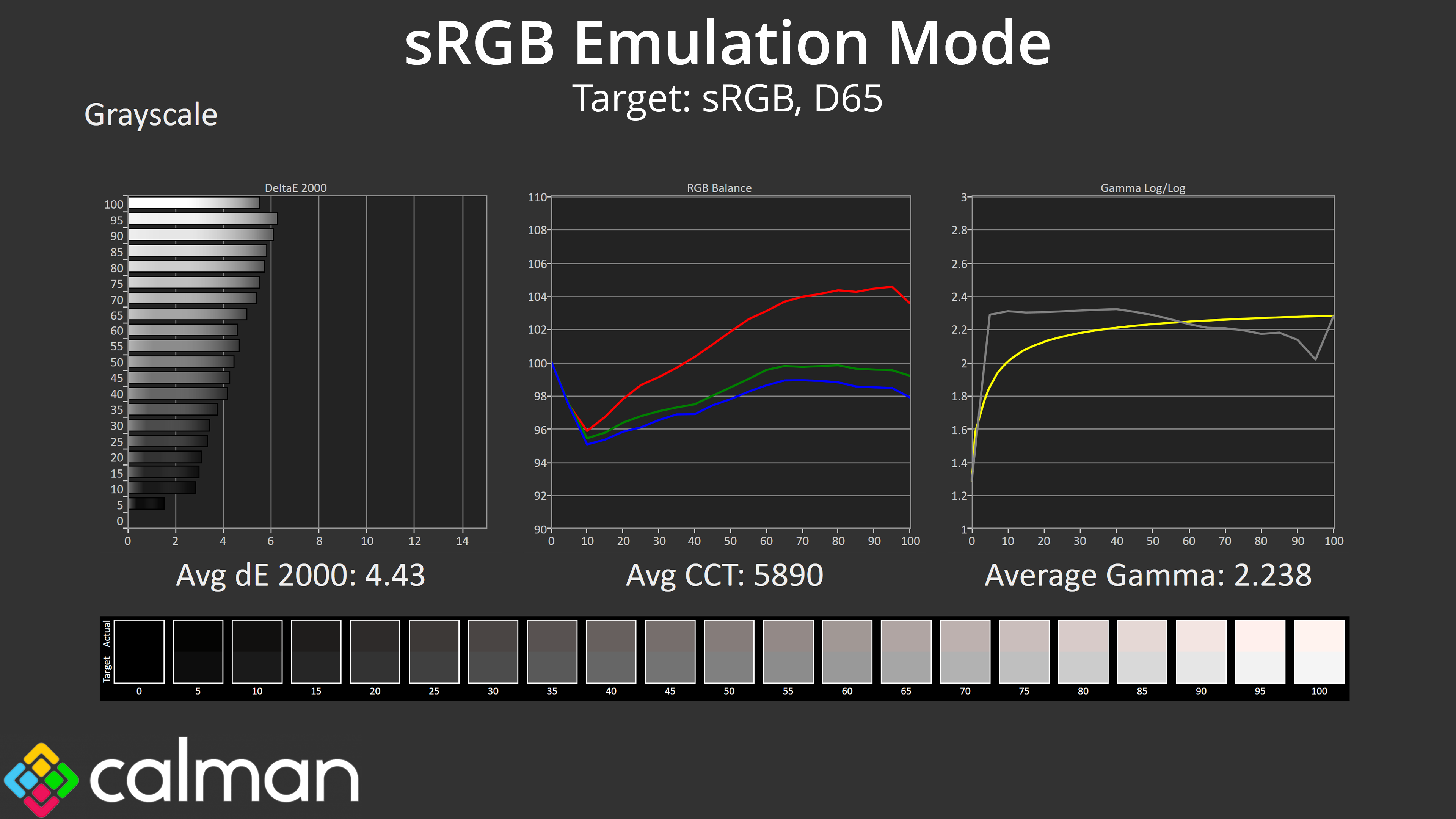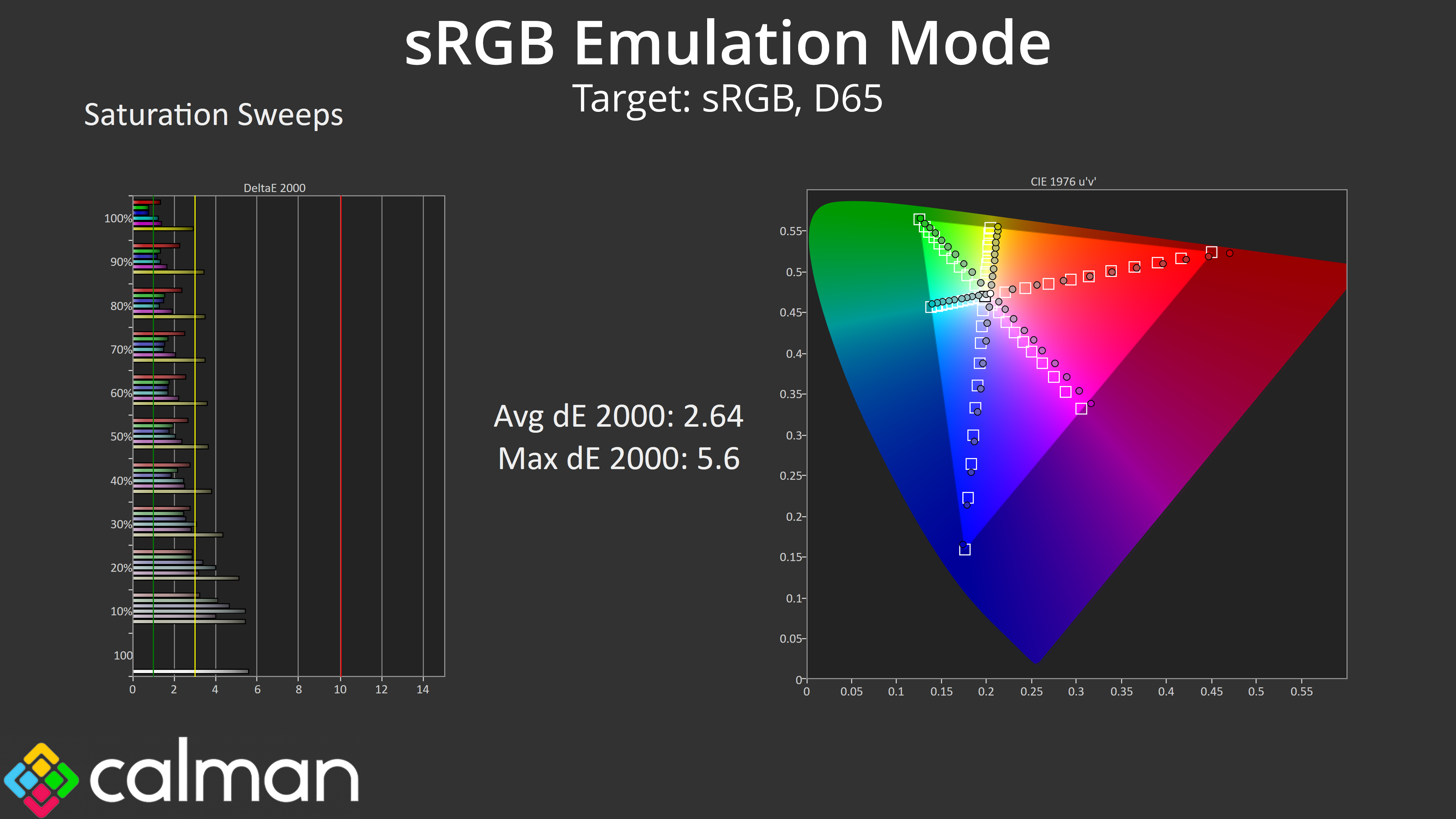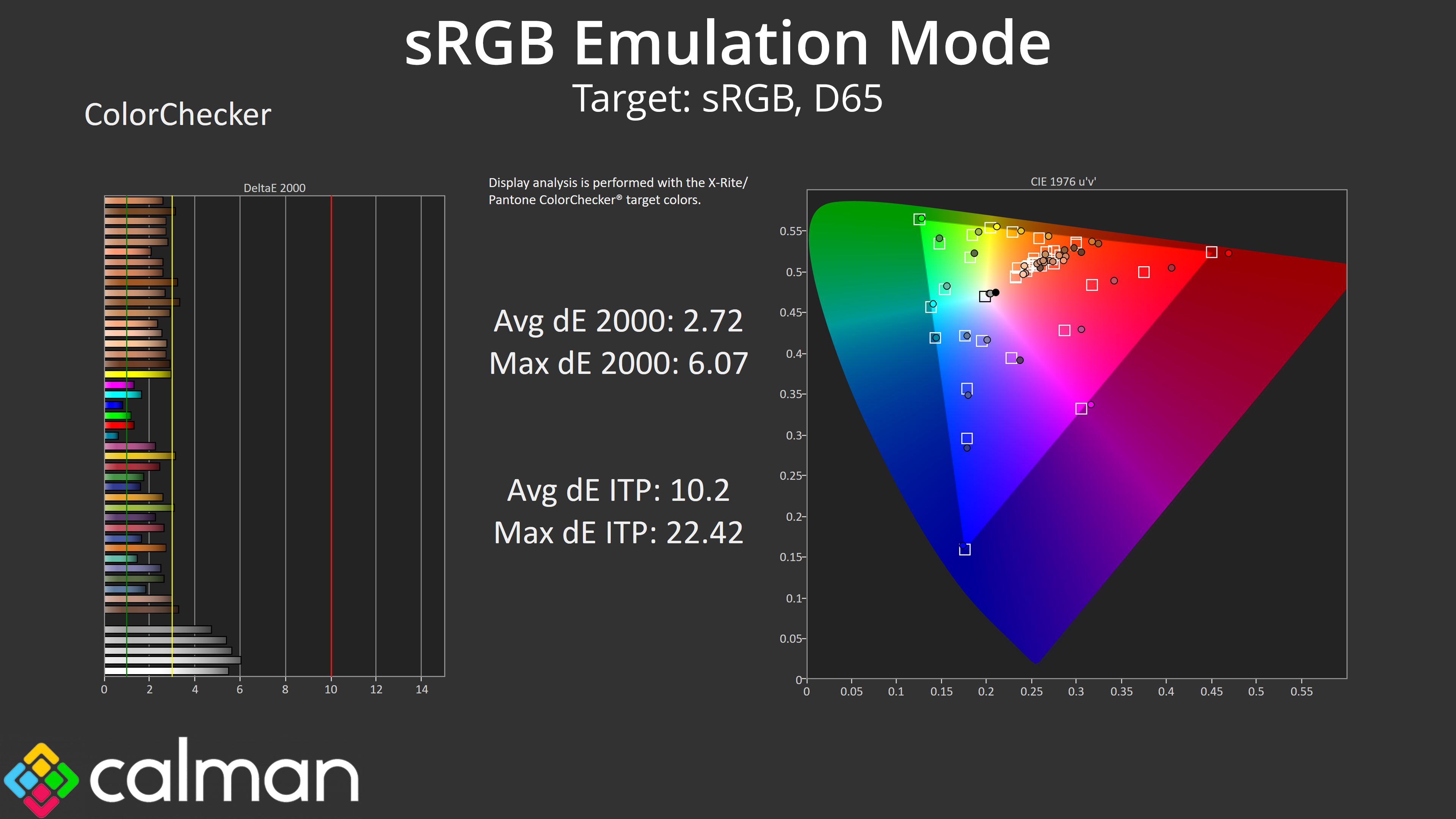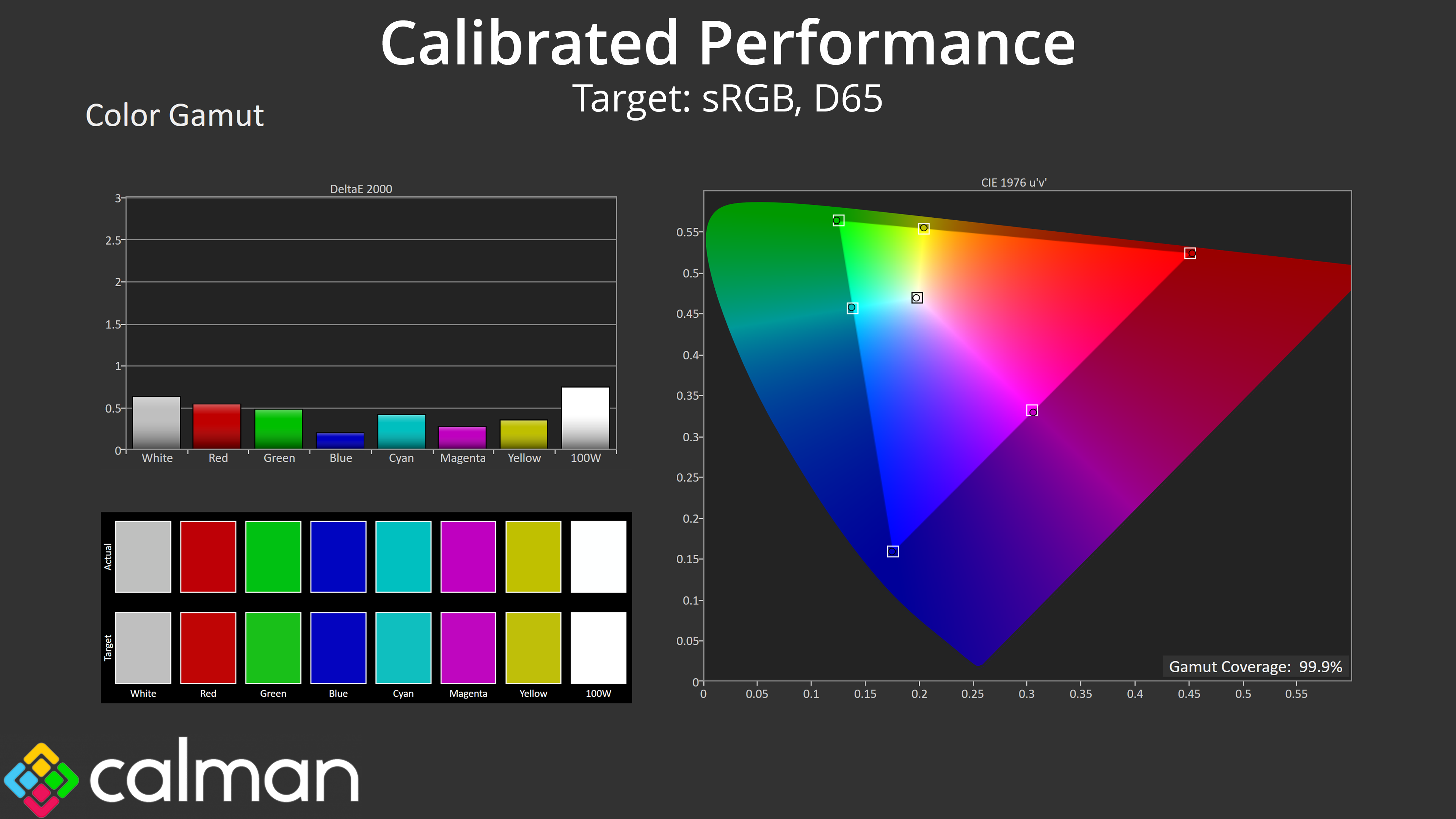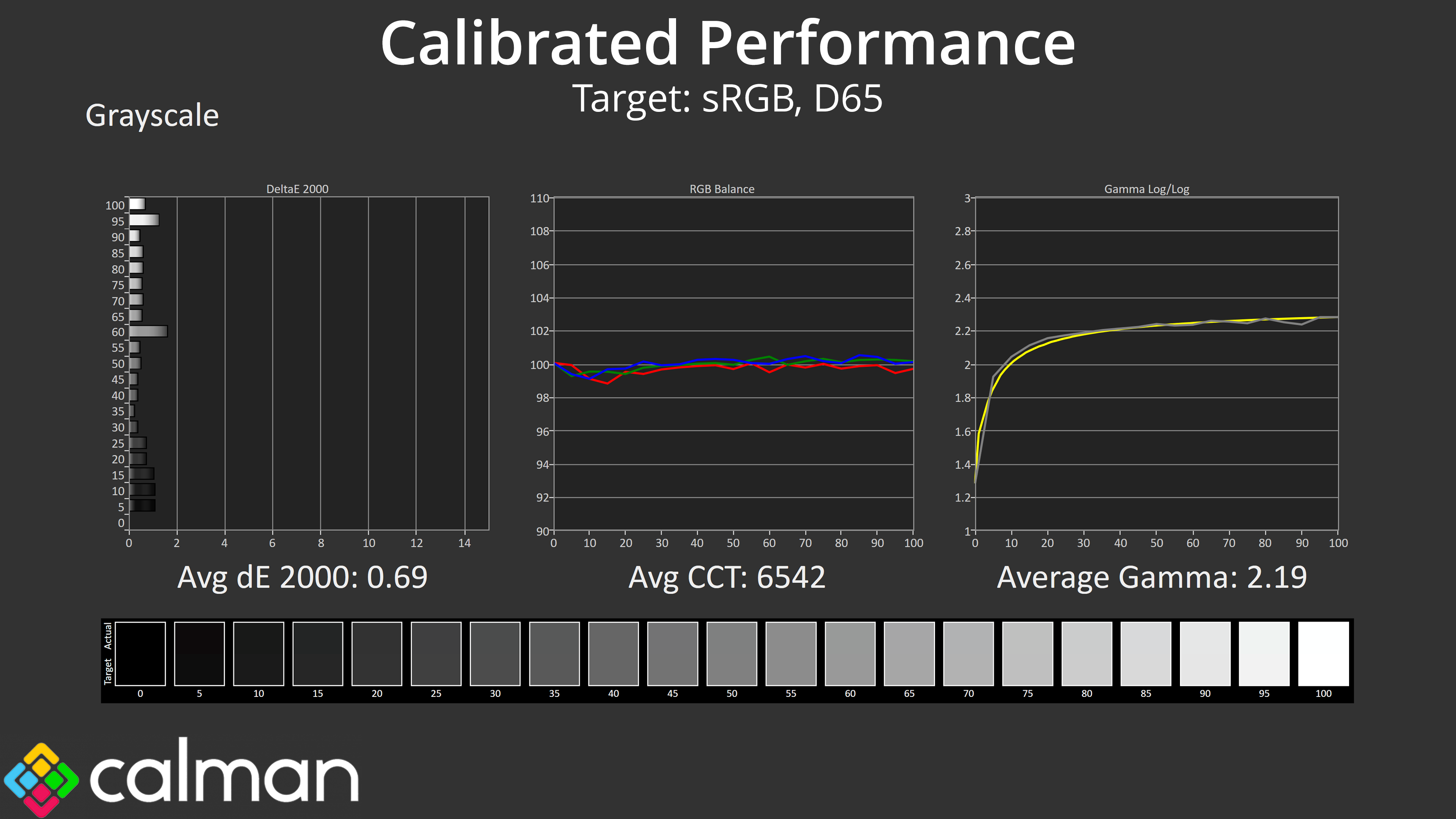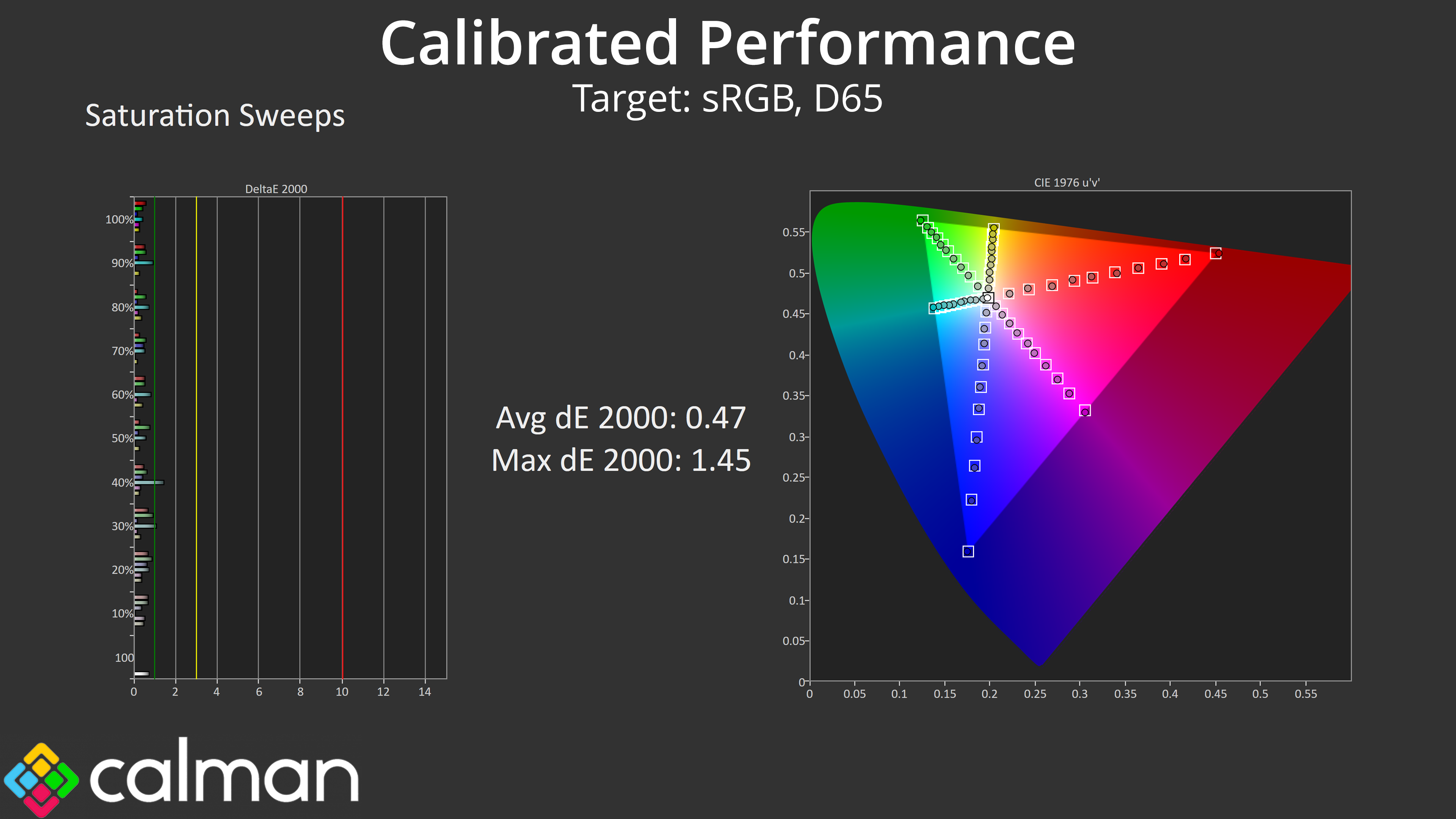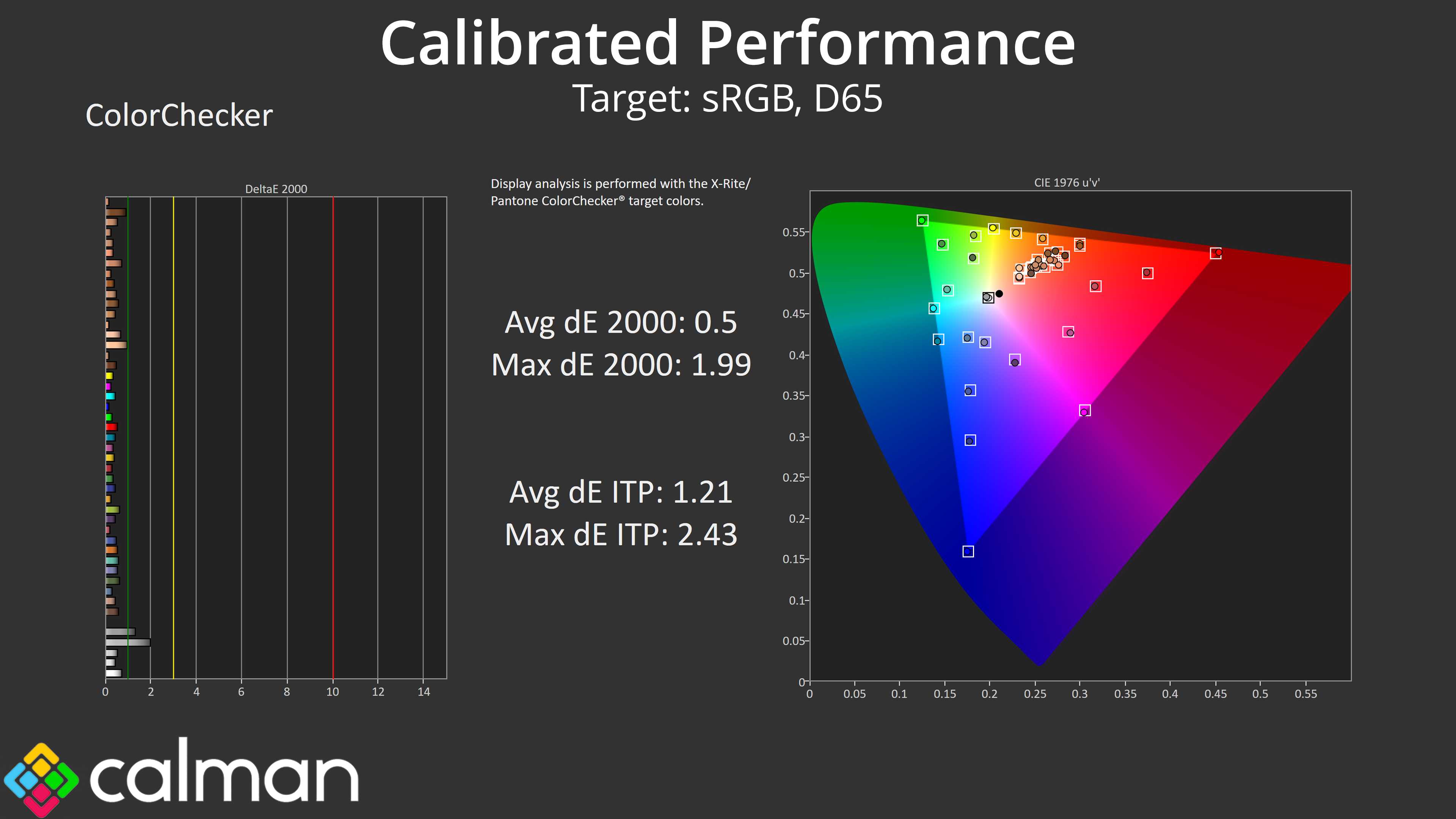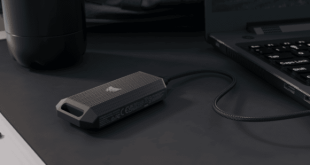Our main test involves using an X-Rite i1 Display Pro Plus colorimeter and utilising Portrait Display's Calman Ultimate software. The device sits on top of the screen while the software generates colour tones and patterns, which it compares against predetermined values to work out how accurate the screen is.
The results show:
- A monitor’s maximum brightness in candelas or cd/m2 at various levels set in the OSD.
- A monitor’s contrast ratio at various brightness levels in the OSD.
- Gamut coverage, primarily focusing on sRGB and DCI-P3 colour spaces.
- Greyscale accuracy, measured across 20 shades, with an average colour balance reported.
- The exact gamma levels, with a comparison against preset settings in the OSD.
- The colour accuracy, expressed as a Delta E ratio, with a result under 3 being fine for normal use, and under 2 being great for colour-accurate design work.
We first run these tests with the display in its out-of-the-box state, with all settings on default. If there is an sRGB emulation option or other useful mode then we may test that too. We then calibrate the screen using the Calman Ultimate software and run the tests again.
You can read more about our test methodology HERE.
Default settings
Brightness and Contrast (Full Screen)
| OSD Brightness | White Luminance (cd/m2) | Black Luminance (cd/m2) | Contrast Ratio |
| 0% | 9.5 | 0.00 | ~Infinite |
| 25% | 64.8 | 0.00 | ~Infinite |
| 50% | 122.7 | 0.00 | ~Infinite |
| 75% | 181.4 | 0.00 | ~Infinite |
| 100% | 241.5 | 0.00 | ~Infinite |
Starting off with brightness testing, things are very typical of a QD-OLED, with a range from just 9.5 nits up to 241.5 nits for a full screen white. Black levels are zero, due to the per-pixel nature of the OLED panel, resulting in effectively infinite contrast.
The brightness is consistent across window size, too – meaning that the panel doesn't dim or brighten depending on what's on screen. Some monitors offer this as an additional toggle, so you can have it on or off, but the Evnia forces this on at all times in SDR.
Gamut (CIE 1976)
| Colour space | Coverage (%) |
| sRGB | 139.2 |
| DCI-P3 | 99.3 |
| Adobe RGB | 98.1 |
| Rec.2020 | 80.8 |
As for gamut, this is as wide as we'd expect from a QD-OLED, far surpassing the sRGB space and hitting 99.3% DCI-P3, 98.1% AdobeRGB and then 80.8% Rec.2020 coverage.
Greyscale
Moving onto greyscale performance, there are two issues here. The first is that the colour balance is way too warm, averaging 5778K – despite the default colour temperature setting being called ‘6500K' – and this was very visible to my eye before I even started using our calibration tools for testing.
The second issue is gamma, which is too high for dark shades and then slightly too low for brighter shades. Overall, not the best factory calibration we've ever seen, and as such the greyscale average dE 2000 of 5.09 is quite high.
Thankfully Evnia does now support manual colour balance and this makes a huge difference. By dropping the red channel to 95 and the green channel to 97, leaving blue at 100, we improved the average CCT to 6505K, which is basically perfect. This, with no change to the gamma tracking, is enough to improve the greyscale average dE 2000 to just 1.37 – well worth doing!
Saturation
As we'd expect from a QD-OLED with a very wide gamut, oversaturation relative to the sRGB space is very evident from our tests.
Relative to DCI-P3, it is better, but accuracy still isn't great, with an average dE 2000 of 3.26.
Colour Accuracy
That has a knock on effect for colour accuracy, which is understandably poor using out of the box settings when targeting the sRGB space.
Targeting the DCI-P3 space does result in a decent improvement, but the results still leave a fair bit to be desired.
As it turns out, a lot of this inaccuracy is due to the very warm colour balance – switching back to our manual colour balance improves things significantly, with a new average dE 2000 of 2.15 when targeting the DCI-P3 space.
sRGB Emulation Mode
Evnia also includes a sRGB emulation mode within the settings, but it uses the same colour temperature setting as above, meaning overall accuracy isn't improved by that much – and that is a shame. Don't get me wrong, it is better than native for sRGB accuracy, with a very slight improvement to gamma tracking too, but it's still far from perfect. You could still use a manual colour balance in the sRGB mode though, which is something.
Calibrated Results
We see the real potential of this QD-OLED panel when calibrating. The results here are stellar, with near-flawless colour balance and gamma, alongside saturation and colour accuracy average dE 2000s of just 0.47 and 0.5, respectively.
 KitGuru KitGuru.net – Tech News | Hardware News | Hardware Reviews | IOS | Mobile | Gaming | Graphics Cards
KitGuru KitGuru.net – Tech News | Hardware News | Hardware Reviews | IOS | Mobile | Gaming | Graphics Cards


